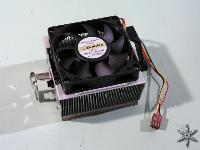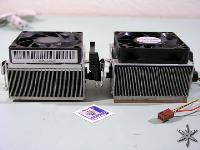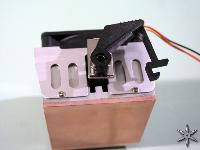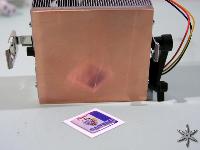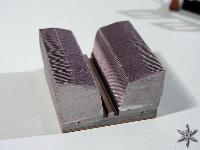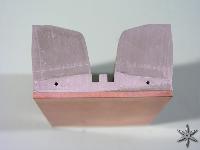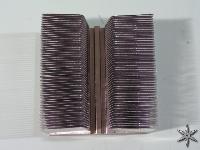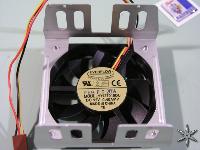After careful consideration I have decided to transfer all hardware review activities to a new domain. I purchased Hardwareasylum.com in 2012 and have been working hard to build a new and improved Ninjalane on that domain. If you are reading this you have reached one of the archived articles, news, projects and/or reviews that were left behind during the site migration.
Please update your bookmarks and be sure to visit the new and improved Ninjalane at Hardwareasylum.com
CoolJag JVC682A K8 Heatsink Review
Author: Dennis Garcia
Published: Sunday, July 18, 2004
Introduction
CoolJag has been an early adopter in providing an aftermarket cooling solution for the Athlon64 and though their heatsink selection is somewhat limited as of this writing I've been told that new items are in development and should be ready for resale very soon.
The JVC682A is not designed to be a super high-performance item but rather a high-capacity replacement for the retail Athlon64 heatsink. The pictures show how similar the two really are, all the way down to the AMD approved clipping mechanism.
The CoolJag JVC682A is a hybrid design meaning that it is constructed from two different materials. The base is made from a solid copper plate that is attached to a skived aluminum heatsink. This technique is quite common in heatsink construction though performance increases are dependant how the copper is used, attached, and located. The heatsink base has been machined flat with no apparent surface imperfections.
Every CoolJag heatsink is designed around a skiving technique. The process ensures that the fin material is directly attached to the base so to provide a smooth and even flow of heat. Bonded fin designs usually have thinner heatsink fins but can never have the same molecular attachment that skived heatsink does.
Thermally controlled fans have become a popular way to provide a degree of cooling capacity without producing a huge amount of noise. Since the fan responds to heat when cooling is not needed the fan will run at a very slow pace. When heat builds up the fan will begin to spin faster and provide more airflow across the heatsink. The little green appendage seen in the photo is the thermal sensor and despite being directly under the fan it responds quite well to both ambient and heatsink temperature changes.

